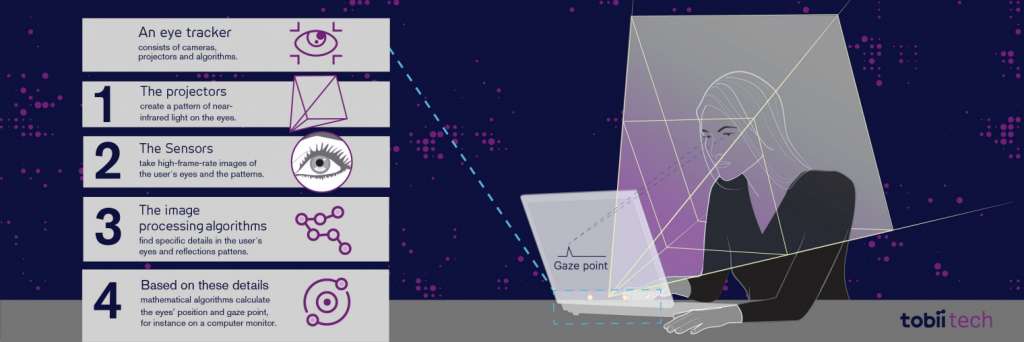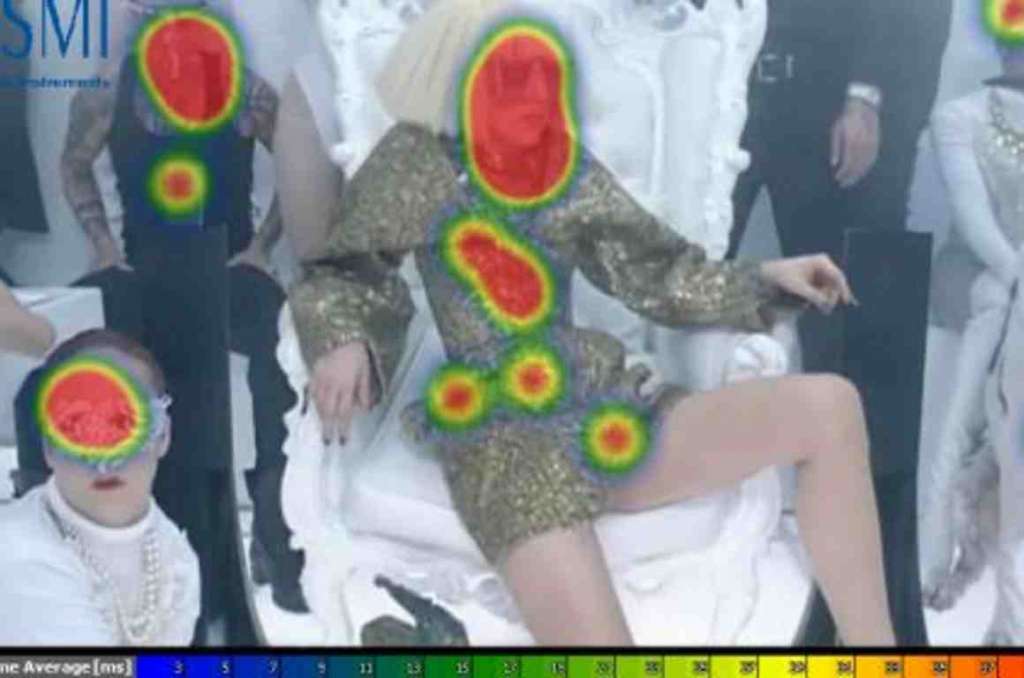I wanted to end my blog posts with a nice overview of what I have been up to, what my focuses were in the past blogs and connect them all under one umbrella, however, as you will see while reading further, I decided to go with something else. I have been focusing on different digital tools, smart technologies that are increasingly being implemented in our lives for another course that I am taking, and decided to share what I came across regarding the capabilities of such technologies instead.
Eye-Tracking

Eye-tracking is the measurement of eye activity, pupil’s reaction to stimuli. Whereas, gaze-tracking is the analysis of eye-tracking with respect to the head. Overall, it has two main components: an infrared light source that is directed towards the eye and camera that tracks the reflection of the light source. These two components are mainly used to detect the rotation of the eye, the direction of the gaze; while also being able to detect blink frequency and changes in pupil diameter. Furthermore, other eye-tracking tools also include other metrics such as fixation points, heatmaps, cognitive load.
Implementation Possibilities
Anything with a visual component can be eye-tracked. Automotive, medical and defense industries can use the sensor for safety purposes while the advertisement, environment, packaging and web-design industries use it to determine the visual behavior of the consumers. Overall the sensor can give indications about a person’s presence, attention, focus, consciousness, and other mental states.
Those being said, other implementation possibilities of the sensor can be exemplified as:
- Psychology and health care
It can be used to understand how attention is distributed.
Has predictive power in certain diagnoses and severity analysis as in autism, FASD, ADHD, Parkinson, etc..
Patient care can be improved due to the assessment of clinical space and health care delivery.
- Neuromarketing (web design, packaging, advertising)
Gaze patterns of the website visitors can be taken into account during web design, packaging, advertising, etc..
- Neuro Architecture (better building designs)
Better designs can be achieved through the understanding of the fundamental attentional and cognitive reactions to buildings
- Automotive
- Computer applications
New user experience can be achieved through humanized user interfaces with the combined usage of eye-tracking and other input modalities, e.g. keyboard, mouse, voice command, touchpad.
Upon these examples of implementation possibilities, I would like to introduce two other implementation possibilities of eye-tracking technology, one providing convenience and early detection while the other is a part of the convenience-privacy debate of the extensive usage of the sensor.
Identifying Criminals Before They Act

“Malintent can be defined as the mental state of an individual intending to cause harm to our citizens or infrastructure. “
The regular security checks at the airport are done with the X-Ray machines that detect weapons or other types of items that can be used to cause harm. In order to identify individuals with malintent, the security officers should rely on simplistic techniques (inc. verifying credentials, randomly selection for questioning and observing individuals for visual cues);.but they don’t have the time to evaluate individuals that thoroughly.
With the Future Attribute Screening Technology (FAST) system, the Department of Homeland Security (DHS) Science and Technology Directorate (S&T) aims to improve the assessment ability of DHS and objectively screen individuals for malintent without randomly selecting or thoroughly evaluating. This system is designed to help security officers to identify individuals for a secondary screening. FAST uses non-invasive sensors to remotely analyze physiological and behavioral cues for malintent including eye movements, body movements and other automatic factors that individuals can’t consciously manipulate. It is intentionally designed to minimize the impact on subjects being screened with inconvenience, e.g., shoe and belt removal, random checks, etc..
During the early tests, 81 percent classification accuracy with invasive, and between 70 to 74 percent classification accuracy with non-invasive sensors have been acquired.
Identifying Sexual Orientation

According to Susan Donaldson James , and Rieger and Savin-Williams article (2012) pupillary change, first fixations and fixation times reveal sex differences and sexual orientation by using the association between arousal and interest. Eye movements of an individual reflect automatic attention, implicit reaction and cognitive load therefore it is argued that those patterns can reflect automatic attention related to sexual attraction and sexual orientation. Order and duration of fixations (scan patterns) on specific features are found to vary with subject-specific motivation and individual’s assessment of what aspects of an image are interesting, important and warrants attention. In general, self-reported sexual orientation is found to correspond with pupil dilation to men and women.
Upon the privacy debate that is initiated with the use of eye-tracking sensors to identify such sensitive personal information, knowledge of the possible use of the data by governments as it was the case with the Canadian Government between the 1950s and 1970s to detect homosexual individuals who were at the time considered national risk even sparks larger-scaled privacy debates.
References:
Farnsworth, B. (2019, April 2). The Definition Of Eye Tracking. Imotions.com. Retrieved October 13, 2019, from https://imotions.com/blog/eye-tracking-work/
Rieger G, Savin-Williams RC (2012) The Eyes Have It: Sex and Sexual Orientation Differences in Pupil Dilation Patterns. PLoS ONE 7(8): e40256. https://doi.org/10.1371/journal.pone.0040256
https://abcnews.go.com/Health/sexual-orientation-revealed-eye-dilation-study/story?id=16941556
What is Eyetracking. (n.d.). Retrieved October 13, 2019, from http://www.eyetracking.com/About-Us/What-Is-Eye-Tracking
What Is Eye Tracking. (n.d.). Retrieved October 13, 2019, from https://www.tobii.com/tech/technology/what-is-eye-tracking/



Recent Comments